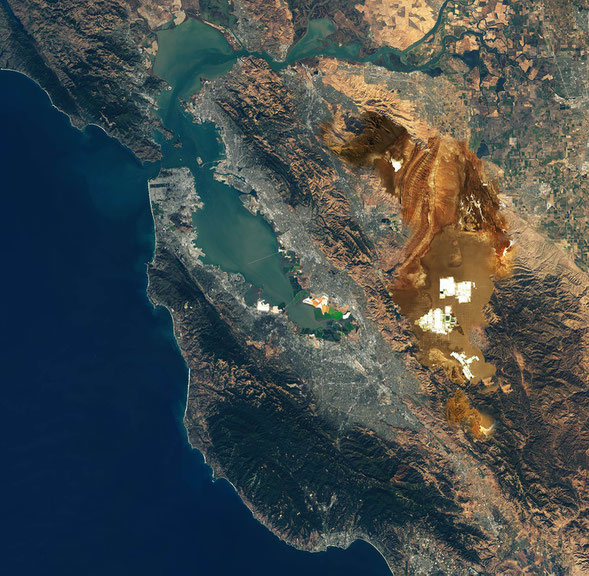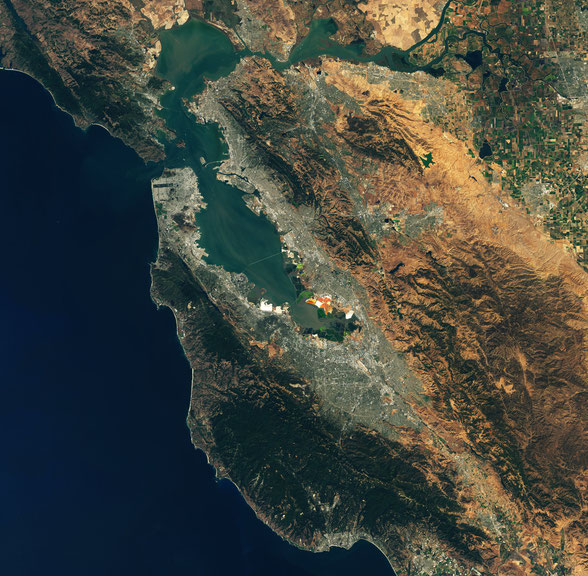Issue 3/2019 - Net section
Data Science Friction
On the AI-based eco-management system Asunder (2019) by Tega Brain, Julian Oliver and Bengt Sjölén
How to manage the transition of Earth’s climate into something that is less suitable for human flourishing is a polarising issue. One solution being forwarded by tech industries is to devel-op data-driven computational systems which prioritise ecological agendas and mitigate human influences. Such methods of ‘painting humans out of the picture’ (Cantrell et al. 2017) is of-ten put forth as a neutral, rational and depoliticised means of managing environments.
Asunder (2019) addresses such assumptions of computational neutrality and the ideological framing of the environment as system – an ecosystem – that can be monitored and managed. An AI-driven ‘autonomous environmental manager’, Asunder arises from a collaboration between artist and ‘eccentric engineer’ Tega Brain (New York City), artist and ‘critical engineer’ Julian Oliver (Berlin) and artist, independent software/hardware designer and hacker Bengt Sjolén (Stockholm) commissioned for Vienna Biennale for Change 2019: Brave New Values: Shaping Our Digital World.
The group have trained 'machine learning' software on satellite imagery from identified ‘re-gions of change’. These include the cities San Francisco, Vienna and Dubai, alongside sites of degradation like the Arctic and the Amazon that represent the crossing of critical planetary boundaries. In turn, Asunder proposes a series of environmental management plans that do not necessarily prioritise human concerns. As the machine learning system generates modifications to satellite imagery, reflecting these plans, computational forecasts are run to study their broader planetary impacts over time; from oceans to ice, freshwater to forests.
The result is a triptych comprised of digitally rendered environmental models flanked by sat-ellite imagery documenting the sites’ recent history and the proposed interventions. Straight-ened coastlines, repositioned geographical formations and relocated cities suggestive of re-combinant nations are among the outcomes, results that are often as preposterous as they are unacceptable to a broader human project.
Employing the same tools as those used by climate scientists, Brain, Oliver and Sjölén have built a machine that effectively ‘dreams up’ fictional geo-political-engineering scenarios. Staging its custom-built mini-super computer uncased, Asunder foregrounds the ex-tensive processing power required to run climate models – a telling contradiction where the energy required to generate an understanding of an environment can only contribute to changes in the environment itself.
In a recent essay Brain (2018) questions the motivations of tech corporations such as Mi-crosoft and Google seeking to bring AI into environmental research and management, given that they stand to profit from such developments. She critiques the ideological framing of the environment as a system that underpins much of this ‘innovation’ and the presumption that species entanglements are operational, functional and available for optimisation. If so, we must ask for what purpose and for whom? Brain claims that such ‘numerical approaches to landscape management applied in the name of economics’ are akin to what ethnographer An-na Tsing (2015) calls ‘plantations’, recalling the entwined history of commercial agriculture and slavery. Brain (2018) stresses that environmental data is by no means neutral but is ra-ther overwrought with human decision-making that has gone into developing and implement-ing the technologies that produce it, and is thus ‘profoundly driven by culture and economics, class and race’. Furthermore, AIs trained on statistics rather than scientific theory incorporate all kinds of human bias. As such, proposals to automate the management of environments rather than neutralising politics, underscores their political formations. Developing computa-tional systems to make decisions for us hedges the accountability of those deploying these systems.
Ecological violence intensifies global inequalities. As Rob Nixon (2013) and Françoise Vergès (2017) argue, it has historically harmed the world’s most vulnerable people and under present conditions will continue to do so. Proposals, such as atmospheric engineering, effec-tively seek to commodify Earth’s climate conditions, and hence its possibilities for life. De-ciding who lives or dies or what kinds of life-worlds will be enabled to survive climate transi-tions are fundamental political problems and it is unlikely that any amount of data will change who ultimately gets to make these decisions. Furthermore, in the epoch of late liberalism such decisions must adhere to the logic of expanding markets. As Brain (2018) observes: “The impetus to ‘study the problem’ ad nauseam gives the appearance of addressing an issue while perfectly maintaining the present state of affairs.”
In his book A Vast Machine (2010), Paul N. Edwards tracks the development of cli-mate science from its beginnings in weather information systems which drove global pro-cesses of data collection, standardisation, communication and automation. Arguably the next evolution of these processes will occur not to better predict the weather, but to control it. Al-ready, China spends millions on ‘cloud seeding’ programs to produce artificial rain (Ye, 2017). Following such prompts, one speculative future leads us towards a scenario in which financialised data-driven and AI-determined climate is the engine of reproductive life.
The Vienna Biennale for Change’s exhibition at the MAK, Uncanny Values: Artificial Intelligence & You, proposes to cultivate new cultural sensibilities attuned to existing and emergent forms of AI. By presenting an all-encompassing AI-driven ‘systems world view’, Asunder confronts us with the world-making capacity of (our) machines that are in-deed learning from us.
References:
Brain, Tega (2018), ‘The Environment is not a System’, A Peer Review Journal About: Research Values, vol. 7, issue 1, http://www.aprja.net/the-environment-is-not-a-system/
Cantrell, Bradley; Martin, Laura J. and Ellis, Erle C. (2017), ‘Designing Autonomy: Oppor-tunities for New Wildness in the Anthropocene’, Trends in Ecology & Evolution, vol. 32, no. 3, pp 156–166. http://dx.doi.org/10.1016/j.tree.2016.12.004
Edwards, Paul N., (2010), A Vast Machine: Computer Models, Climate Data, and the Politics of Global Warming. Cambridge, Massachusetts & London, England: The MIT Press.
Nixon, Rob (2013), Slow Violence and the Environmentalism of the Poor. Cam-bridge, Massachusetts: Harvard University Press.
Tsing, Anna Lowenhaupt (2015), The Mushroom at the End of the World: On the Possi-bility of Life in Capitalist Ruins. Princeton & Oxford: Princeton University Press.
Vergès, Françoise, (2017), ‘Racial Capitalocene: Is the Anthropocene racial?’, https://www.versobooks.com/blogs/3376-racial-capitalocene
Ye, Josh (2017), ‘China showers 1.15 billion yuan on rainmaking project for parched north-west,’ South China Morning Post, 24 January 2017, https://www.scmp.com/news/china/policies-politics/article/2064729/china-showers-y115b-rainmaking-project-parched



